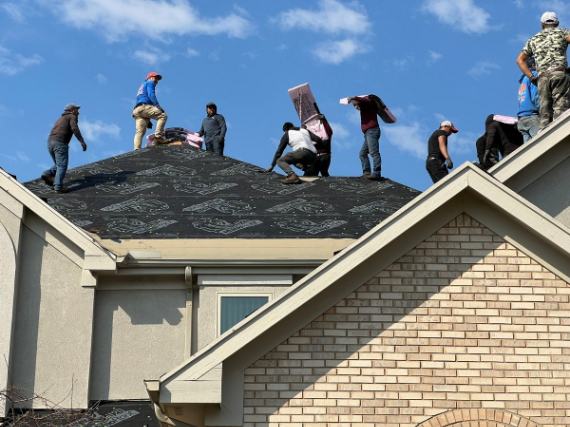Dealing with Roofer Dallas repairs after a storm can be overwhelming, but taking a systematic approach can help ensure your safety and the successful restoration of your roof. Here’s a step-by-step guide for roofing services after a storm:
1. Safety First: Before inspecting or attempting any repairs, prioritize safety. Ensure that the storm has completely passed and the weather conditions are safe for you to work outside. Wear appropriate protective gear, such as a hard hat, gloves, and sturdy footwear.
2. Exterior Inspection: Walk around the exterior of your property and visually assess the damage to your roof. Look for signs of missing or damaged shingles, loose flashing, displaced vents, and any other visible issues. Take photographs or videos to document the damage for insurance claims.
3. Interior Inspection: Check your attic or the highest point of your home for leaks or water stains. Use a flashlight to inspect the ceiling for any signs of water penetration. Note the location and extent of any leaks you find.
4. Temporary Repairs: If you find any obvious leaks, you may need to implement temporary repairs to prevent further water damage until professional help arrives. Use tarps, roofing cement, or patches to cover the damaged areas and divert water away from the interior.
5. Contact Your Insurance Company: Contact your homeowner’s insurance company to report the storm damage. Provide them with the information you’ve gathered from your inspections and document the conversation. They will guide you through the claims process.
6. Hire a Professional Roofer: Unless you are experienced in roofing, it’s best to hire a professional roofing contractor for thorough inspections and repairs. Look for a reputable local roofer with experience in storm damage repairs. Get multiple quotes if possible.
7. Full Inspection by a Professional: When the roofing contractor arrives, they will perform a comprehensive inspection of your roof. They will assess the extent of the damage and recommend the necessary repairs. This inspection will provide you with a clearer understanding of the repairs needed.
8. Repair or Replacement Recommendations: Based on their inspection, the roofing contractor will recommend whether your roof requires minor repairs or if a partial or full roof replacement is necessary. Discuss the options with them, taking into consideration your budget and insurance coverage.
9. Obtain Necessary Permits: If a roof replacement is required, check with local authorities to see if any permits are necessary before work can begin. Your roofing contractor should be familiar with local regulations and can assist with this process.
10. Repair or Replacement Work: Once you’ve agreed on the scope of work with the roofing contractor and obtained any necessary permits, the repair or replacement work can begin. Professional roofers will follow industry best practices to ensure a safe and effective restoration.
11. Post-Service Inspection: After the work is completed, perform a final inspection with the roofing contractor to ensure that all repairs have been carried out as agreed. This is also a good time to discuss any warranties or guarantees on the workmanship and materials.
12. Document for Insurance: Keep all receipts, invoices, and documentation related to the repairs or replacement. This information will be important for filing an insurance claim and for your records.
13. Regular Maintenance: After the storm damage repairs are complete, continue with regular roof maintenance to extend the lifespan of your roof. Regular inspections can help identify issues early on and prevent costly repairs down the line.
Remember that safety is paramount during this process. If you are uncomfortable with any step or encounter significant damage, it’s best to consult a professional roofing contractor.
